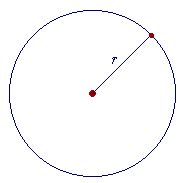Variation: Section 2
Varies inversely
A quantity a varies inversely as a quantity b, if, when b changes, a changes in the inverse ratio.
This means that if b doubles, then a will become half as large. For the inverse of the ratio 2 to 1 ("doubles") is the ratio 1 to 2 ("half"). The terms are exchanged. (See Lesson 16 of Arithmetic, and Problem 1.)
When a varies inversely as b, we say that a is inversely proportional to b.
Example. Suppose that the time it takes to do a job is inversely proportional to the number of workers. The more workers, the shorter the time.
Specifically: If 2 workers can do a job in 9 days, then how long will it take 6 workers?
Answer. The number of workers has tripled, going from 2 to 6 . Therefore it will take only a third as many days . It will take only 3 days.
Problem 12. a varies inversely as b. When b = 7, a = 12. What is the value of a when b = 28?
To see the answer, pass your mouse over the colored area.
To cover the answer again, click "Refresh" ("Reload").
Do the problem yourself first!
In going from 7 to 28, b has increased four times. Therefore inversely, a will be one fourth as large. One fourth of 12 is 3.
Problem 13. a varies inversely as b. When b = 6, a = 10. What is the value of a when b = 4?
a = 15. For, in going from 6 to 4, the value of b became two thirds of its original. 4 is two thirds of 6. Therefore, the value of a will be one and a half times its original. (The inverse of 2 to 3 -- "two thirds" -- is the ratio of 3 to 2: "one and half times.") One and half times 10 = 10 + 5 = 15.
When a varies inversely as b, their relationship has this algebraic form:
| a | = | k b |
To solve the previous problem algebraically, we can find k by plugging-in the initial values 10 and 6:
| 10 | = | k 6 |
Therefore, k = 10· 6 = 60. The formula is:
| a | = | 60 b |
Hence, when b = 4:
| a | = | 60 4 |
= | 15. |
Please. Make an effort to understand ratios, rather than having to resort to algebra.
Varies as the inverse square
A quantity a varies as the inverse square of a quantity b, if, when b changes, a changes by the square of the inverse ratio.
Thus if the value of b doubles , that is, changes in the ratio 2 to 1, then the value of a will be one fourth as large -- it will change in the ratio 1² to 2², which is 1 to 4.
Problem 14. a varies as the inverse square of b. When b = 15, a = 7. What is the value of a when b = 3.
In going from 15 to 3, the value of b became one fifth of its original. 3 is one fifth of 15. Therefore, the value of a will be twenty-five times its original. 25· 7 = 175.
(The inverse of 1 to 5 -- "one fifth" -- is the ratio of 5 to 1. The square of that is 25 to 1: "twenty-five times.")
When a varies as the inverse square of b, then their relationship has this algebraic form:
| a | = | k b² |
The most famous instance of this is Newton's law of gravity. It states that the force F of gravitational attraction between two masses varies as the inverse square of the distance r between them.

| F | = | k r² |
(Recall that the surface area of a sphere varies as the square of its radius.)
When the distance from the Earth becomes extremely large, that law accounts for weightlessness in outer space.
Problem 15. A spaceship is circling the Earth at a radius of 8 miles. How will the force of gravity on it change if the radius of its orbit increases to 80 miles?
In going from 8 miles to 80, the distance became ten times greater. Therefore, the force of gravity will be one hundredth of what it was.
(The inverse of 10 to 1 -- "ten times" -- is the ratio of 1 to 10. The square of that is 1 to 100: "one hundredth.")
Please make a donation to keep TheMathPage online.
Even $1 will help.
Copyright © 2001-2007 Lawrence Spector
Questions or comments?
E-mail: themathpage@nyc.rr.com